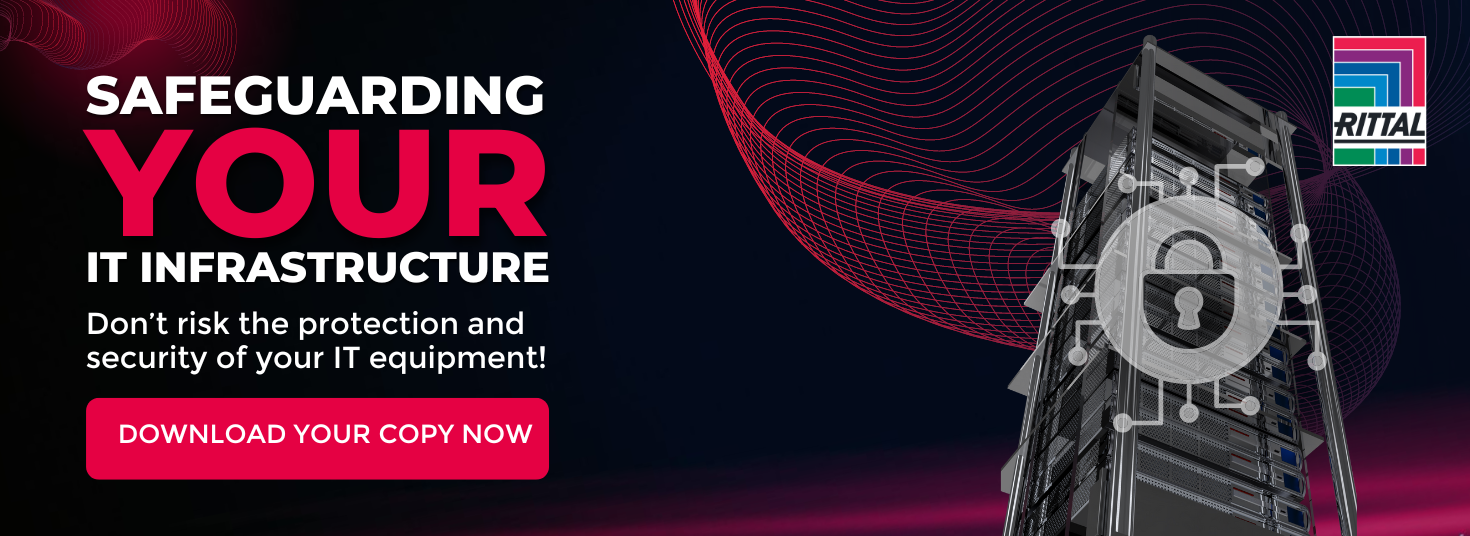
The UK's Railways: Signalling and Telecoms Enclosures, Cooling and Modern Solutions
The Future of Railways in the UK: A Journey Towards Digitalisation, Safety, and Sustainability
For centuries, the United Kingdom's railways have played a pivotal role in the country's development, connecting cities, towns, and communities.
As we look to the future, the railway industry is set to undergo a transformative evolution; driven by digitalisation, better safety enhancements, sustainability initiatives, and efficient energy usage.
Extra demand (passenger numbers are predicted to rise by an extra one billion rail journeys by the mid-2030s*, means that additional capacity is urgently required, expanding the scope of the existing infrastructure so that the network can increase the number of trains and connections, while also creating a more reliable service. And all this must be delivered with minimum upheaval to passengers.
Projects like HS2 and TransPennine Route Upgrade, for example, are designed to increase capacity, lower carbon footprint and improve connectivity, by running high-speed trains across England.
This demonstrates that there is an urgent need to upgrade and modernise ageing infrastructure and legacy systems to deliver this extra capacity. However, minimising the huge cost and disruption created by large capital construction projects is paramount to ensuring value for the taxpayer for a sustainable railway.
.png?width=3200&height=1400&name=UK%20Railways%20(1).png)
There is a big focus is on targeted conventional interventions supported by digital technology, enabling the development of new signalling and telecoms technology to optimise performance and reliability across the network, while also keeping passengers better informed about train running and delays.
Digital technology of this sophistication and sensitivity requires closely controlled enclosure housings to work reliably and cost-effectively over their lifetime.
The best enclosures for railways are highly resilient, quick to install and maintain, and are fit for purpose. Railways are hazardous places for any equipment, but for especially delicate electrical and communications equipment. Vibrations, vandalism, and the forces of nature are just a few of the challenges that trackside or outdoor equipment face, and yet their desired lifespan could be decades long.
Rittal, a leading provider of enclosures and enclosure cooling products for IT and electrical equipment, is supporting the UK’s railways with solutions for station systems, signalling, telecoms, security, IT infrastructure, and more.
In this article, we will explore the promising path ahead for the UK railways, with a focus on Rittal's contributions to the industry.
Digitalisation of Railways
The digitalisation of railways in the UK is a key factor in enhancing efficiency, reliability, and passenger experience. A big example of this is the current deployment of the European Train Control System (ETCS) throughout various lines across the UK. This allows trains to run closer together and travel at their best speeds while maintaining safe braking distances. As the rail network becomes increasingly interconnected, the need for robust IT, signalling and telecoms infrastructure and secure enclosures to protect important active equipment has never been more critical.
- Signalling and Communications Systems: Digitalisation involves the deployment of advanced signalling and communications systems to improve train control, traffic management, Station Information and Security Systems and Customer Information Systems. Rittal’s enclosures and cooling solutions help safeguard the essential equipment that powers these systems.
- Data Centers: Railways heavily rely on trustworthy “data centers” or “comms rooms” for various operations; from ticketing to train scheduling. As passenger numbers rise and projects to meet this need progress; the need for quality, reliable solutions for comms rooms increases too. Modular and deployable IT infrastructure is a game changer in helping put the infrastructure where it needs to be, quickly, as opposed to making do with existing buildings in potentially inconvenient locations. Furthermore, highly efficient and IT specific cooling solutions from Rittal are essential to maintain optimal temperatures within these environments, ensuring uninterrupted services.
Safety Enhancement
Safety is paramount in the railway industry; its reputation depends upon it, and even small incidents are likely to lead to delays and rising costs.
Of course, safety equipment must be properly housed and maintained in order to monitor and protect stations and tracks. Surveillance cameras, access control systems and telecoms equipment must be sufficiently protected from harsh environments or vandalism. Incorrect housing may create issues with equipment lifespan, or even lead to failures. Rittal plays a crucial role by enabling the safeguarding of critical infrastructure that contributes to railway safety.
Safety measures for staff and engineers who service and maintain the railway network are also extremely important, particularly for those working trackside. Choosing enclosures that offer quick installation and minimal delays for replacing, maintaining or adding new equipment means less time spent trackside and therefore less exposure to potential hazards. Rittal enclosures offer a clear advantage here; with lightweight materials for easy maneuverability, modular designs for flexibility, and pre-fabricated, modular concrete bases, ready for fixing our enclosure solutions to, allowing for fast installation of new equipment.
Proper temperature management (especially as outdoor temperatures are becoming more unpredictable) and minimising condensate are crucial factors in avoiding failures, which pose a safety risk. Extreme weather conditions can have a significant impact on railway safety. Rittal's weatherproof outdoor enclosures, with IP55 rating and special construction and design features, ensure that essential equipment remains operational even in the harshest weather, reducing the risk of accidents and delays.
.png?width=3200&height=1400&name=UK%20Railways%20(2).png)
Sustainability Initiatives
Sustainability is a pressing concern globally, and the UK railways are no exception. The railway industry has a responsibility to reduce its environmental footprint, and to keep trains moving well into the future.
Green Infrastructure: As railways adopt green initiatives, such as solar panels and wind turbines to generate clean energy, Rittal's enclosures, enclosure cooling as well as other solutions, ensure the protection and functionality of critical infrastructure components.
Sustainability and enclosure cooling: Rittal offers energy-efficient enclosure cooling solutions that help reduce energy consumption. In fact, the Rittal Blue e+ product family offers climate control solutions with the highest energy efficiency worldwide, with energy savings of 75% on average being achieved.** With a longer service life for installed components, global usability and digital service offerings, Blue e+ guarantees sustainability at every level. By optimising cooling processes, less energy is required to maintain equipment at the ideal operating temperature, helping railways towards their sustainability goals.
Using Blue e+ enclosure cooling means choosing solutions designed with cost reduction in mind, with the option for intelligent maintenance through remote monitoring and control. This remote monitoring reduces the need for personnel on site, and means equipment can be kept running at its highest capacity.
Sustainability and railway IT systems: Energy efficiency is a major concern for energy-hungry data centres as oil/gas prices continue on their steep upward trajectory.
There is a pressing need to address legacy energy inefficiency issues, particularly in older railway IT facilities, looking at ways to reduce waste and increase productivity.
The rapid evolution of IT systems and electronic equipment is also creating problems as processing power increases and footprints shrink, both of which are adding to the heat densities within individual IT racks. Adding new servers without upgrading cooling equipment typically means that the existing cooling units have to work much harder. Inevitably, this leads to rise in their energy consumption and it can mean a reduction in the lifetime of the whole IT/cooling system. It’s essential, then, for modern railways to invest in the best solutions.
A cooling upgrade will not only save money, it will also help maintain optimal working conditions for the sensitive IT equipment that each rack houses.
.png?width=3200&height=1400&name=UK%20Railways%20(3).png)
Effective outdoor enclosures for UK Railways
Rittal's expertise in providing electrical enclosures ensures that sensitive equipment remains protected from harsh environmental conditions, vandalism, and unauthorised access. This wealth of knowledge is helping the UK’s railways to operate safely and reliably.
Enclosures are large and conspicuous, and often located in publicly accessible areas, which makes them vulnerable to thieves.
An enclosure made of interlocking, carefully configured panels can provide greater security. Damage is easy to repair; a damaged panel can be simply removed and replaced, quickly and relatively cheaply, ensuring the system is up and running again sooner, potentially allowing you to maintain services and operations in the process. This speed of repair is a necessity for trackside equipment, both for the safety of workers and to maintain a reliable service.
By contrast, enclosures built as shells are a lot more difficult and expensive to repair. Any damage to one side will mean the whole enclosure will need to be removed from site, to be either fixed or replaced – which increases the carbon footprint and often causing shutdowns affecting live services.
Enclosure Material
Stainless steel or galvanised steel are popular choices for enclosures, largely because they typically last a long time. But aluminium is often a better and more cost-effective solution for rail applications outdoors. It is relatively cheap, and much lighter than steel, so heavy lifting gear isn’t necessarily required, improving installation times. Plus, it has impact properties which makes it less prone to cracking whilst not rusting in the way steel has the potential to.
Smaller systems can be housed in GRP enclosures, ideally with Class 2 protection (ie. insulated to 1000 volts), and are a good option for small remote communications or telemetry devices, relays, terminal boxes, and lighting systems.
Enclosure Testing
Enclosures placed near railway lines must be able to withstand challenges like shock and pressure, particularly within tunnels. These must be tested and certified as capable of withstanding the pressure differentials created by fast-moving passing trains, which are so powerful they can easily remove an enclosure door.
In certain environments, fire resistance is also very important.
Protection (IP) Ratings
IP ratings for outdoor enclosures indicate the protection level offered by the enclosure against solid and water ingress. However, they are based on tests carried out under laboratory conditions, which don’t replicate conditions by a railway line.
An IP66 rating, by itself, is not a good indication of an enclosure’s resilience in the face of wintery weather where rain can freeze against the unprotected seals of the door and break the seal down over time thus rendering the IP rating inconsequential.
IP55 ratings are more than adequate against the UK’s winter weather if these are coupled with an enclosure design that protects the seal. Rittal’s outdoor enclosures feature physical protection of the seals with features such as a protruding roof canopy, double skinning and protective flanges to stop rainwater from making contact with the seals.
Single vs double-skinned enclosures
Enclosures are typically either single- or double-skinned units (ie. with two material layers separated by an air gap).
New digital technology often needs to be housed in double-skinned enclosures to help increase security, to make maintenance significantly easier (as the outer panels can be removed and replaced without the whole enclosure needing to be replaced), to reduce condensate and of course to improve temperature management.
Heat absorbed directly from the sun’s rays (solar gain) is significantly reduced with double-skinned enclosures; the air gap between its two skins buffers the equipment from the effect of the sun. Single-skinned enclosures act like radiators, absorbing and then dispersing heat.
The difference in the internal temperature between double- and single-skinned housing can be as much as 15oC, which can dramatically change the performance and efficiency of equipment, as well as increasing its lifespan.
An outdoor enclosure should also have some form of climate management in place, whether that is passive, using louvres and filters, or active from fans creating a throughput of air to help remove the heat. Unfortunately, in high summer ambient temperatures, neither option may offer much in terms of heat transference. In these circumstances, cooling based on refrigeration is required. This will require a fully sealed enclosure; something that seems to be the direction of travel for many applications.
Conclusion
The future of railways in the UK is one of promise, driven by digitalisation, safety enhancements, sustainability initiatives, and efficient energy usage.
Rittal, with its expertise in electrical enclosures and enclosure cooling products for IT equipment and electrical controls, plays an integral role in shaping this future. As the railway industry evolves, Rittal stands ready to support the sector with innovative solutions that protect critical infrastructure, improve safety, reduce energy consumption, and enhance overall efficiency.
In conclusion, the future of UK railways is bright, and Rittal's partnership in this transformation ensures that the railways remain at the forefront of modern transportation, delivering safe, reliable, and sustainable services to passengers and cargo alike.
*Network Rail **Benchmarked against Rittal’s previous generation of cooling solutions






